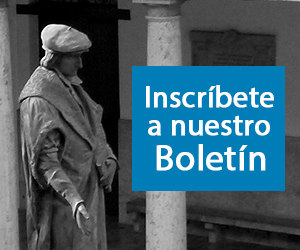
Family rights to oppose autopsy and subsequent removal of child’s organs for religious reasons. Regarding the judgmet of the european court of human rigths (fourth section) of july 20, 2021
Autor: Jorge Enríquez Sordo. Doctorando en la Universitat de València. Universitat de València. jenriquezsordo@gmail.com
Resumen: El objetivo de este artículo es reflexionar sobre el derecho a oponerse a la práctica de la autopsia y el impacto que tiene la defensa del interés general o científico como límite a su ejercicio. En la medida en que vayamos comentando la sentencia del Tribunal de Estrasburgo de 20 de julio de 2021, analizaremos quiénes son los distintos sujetos legitimados para disponer u oponerse a la autopsia de un cadáver, cuál es la calidad y contenido de su situación jurídica de poder, así como la manera en que deben solucionarse los conflictos de intereses que se susciten cuando dichas figuras entran en colisión. Además, valoraremos si este derecho está recogido en los arts. 8 y 9 del Convenio Europeo de Derechos Humanos y explicaremos el camino que ha seguido la jurisprudencia creada por la alta Corte al respecto. Se comentará al unísono la legislación austriaca que rige la materia y que fue objeto de consulta por parte del Tribunal a la hora de dictaminar el caso. Finalmente, se analizará el art. 13 del Convenio Europeo de Derechos Humanos y la importancia de que se establezcan mecanismos de protección preventiva en este ámbito.
Palabras clave: derecho de disposición sobre el cadáver; derecho a oponerse a la autopsia; potestad sobre el cadáver; proceso civil; cadáver; medidas preventivas; dignidad humana; creencias religiosas.
Abstract: The objective of this article is to reflect on the right to oppose the practice of autopsy and the impact of defending the general or scientific interest as a limit to its exercise. To the extent that we comment on the judgment of the Strasbourg Court of July 20, 2021, we will analyze who the different subjects entitled to order or oppose the autopsy of a corpse, what is the quality and content of their legal status of power, as well as how conflicts of interest that arise when these figures collide should be resolved. In addition, we will assess whether this right is included in articles 8 and 9 of the European Convention on Human Rights, and we will explain the path followed by the jurisprudence of the High Court in this regard. The Austrian legislation that governs the matter and that was the subject of consultation by the Court at the time of ruling on the case will be commented on in unison. Finally, article 13 of the European Convention on Human Rights and the need to establish preventive protection mechanisms in this area will be analyzed.
Key words: right to dispose of the corpse; right to oppose the practice of autopsy; authority over the corpse; civil proceedings; dead body; precautionary measures; human dignity; religious beliefs.
Sumario:
I. A MODO INTRODUCTORIO.-
II. PARA SITUARNOS EN LO ACONTECIDO.-
III. SOBRE LOS SUJETOS LEGITIMADOS.-
IV. A PROPÓSITO DE LA UTILIZACIÓN DE LOS ARTS. 8 Y 9 DE LA CEDH COMO FUNDAMENTO DE LA PROTECCIÓN DEL EJERCICIO DEL DERECHO DE DISPOSICIÓN SOBRE EL CADÁVER.-
V. INTERESES PÚBLICOS O CIENTÍFICO VS DERECHO DE DISPOSICIÓN SOBRE EL CADÁVER. ¿ES NECESARIO OBSERVAR UNA ALTA CONDUCTA BIOÉTICA SOBRE LA BASE DEL RESPETO A LA DIGNIDAD HUMANA CON PREFERENCIA AL PROGRESO DE LA CIENCIA EN EL ÁMBITO DE LA SALUD?-
VI. EL DERECHO A DISPONER SOBRE LA REALIZACIÓN DE LA AUTOPSIA Y SU CONTENIDO.-
VII. A PROPÓSITO DEL VOTO PARCIALMENTE DISIDENTE DEL JUEZ PASTOR VILANOVA Y LA IMPORTANCIA DE REFORZAR LA IMPLEMENTACIÓN DE UN ENFOQUE PREVENTIVO.-
Referencia: Rev. Boliv. de Derecho Nº 36, agosto 2023, ISSN: 2070-8157, pp. 56-91
Revista indexada en LATINDEX, ESCI (ISI-Thomson Reuters), CIRC, ANVUR, REDIB, MIAR, RRDe (Q1 Multidisciplinar).





